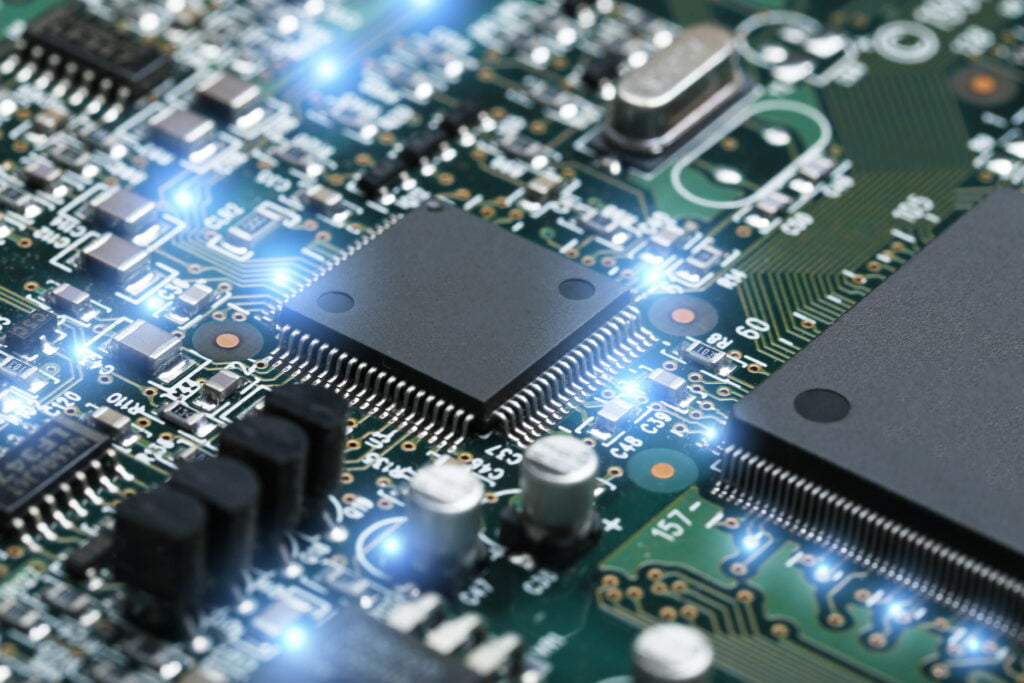Imagine a world where hardware can be modified like clay in the hands of a competent sculptor, and where digital circuits can adjust to our ever-changing demands. Field-Programmable Gate Arrays (FPGAs), which have amazing capabilities, have made it possible for such a world to exist.
These interesting gadgets have completely changed the way that technology is developed today, allowing engineers to be more creative and push the limits of innovation.
In this engrossing blog article, we will delve into the mystifying world of FPGAs, revealing their benefits and the countless applications where they excel.
Due to their ability to be customized, programmable logic devices defy the limitations of fixed-function circuitry. FPGAs provide us the tempting ability to reconfigure and reprogram them at whim, sculpting them into custom solutions fitted to our exact specifications, in contrast to their inflexible cousins, Application-Specific Integrated Circuits (ASICs). FPGAs give engineers the power of lightning-fast flexibility, enabling them to quickly turn their ideas into reality.
As we set off on this fascinating adventure, we’ll also look into the future, spotting new trends and navigating the difficulties that FPGA technology will face. Be prepared for the unexpected as we reveal the hidden magic of these amazing devices and show engineers how important it is to comprehend FPGA capabilities.
Advantages of FPGAs:
- Flexibility and Reconfigurability: FPGAs provide unmatched flexibility because they may be reconfigured to carry out a variety of jobs. FPGAs enable updates and adjustments to the hardware configuration, in contrast to application-specific integrated circuits (ASICs), which are created for specific applications and cannot be reprogrammed. Rapid prototyping, iterative design revisions, and adaptability to changing requirements are all made possible by this flexibility.
- Parallel Processing Capabilities: FPGAs are excellent at parallel processing, enabling the execution of numerous processes at once. Due to FPGAs’ ability to be reconfigured, parallel architectures can be implemented, allowing for the distribution of various jobs or computations among a number of parallel hardware blocks. Performance is considerably improved by this parallelism, especially for computationally demanding applications like artificial intelligence, digital signal processing, and encryption.
- Customizability: Custom hardware designs can be made using FPGAs to meet the needs of certain applications. In order to optimize performance and power consumption, designers can implement their own logic functions, algorithms, and interfaces in hardware. Compared to general-purpose processors, which execute instructions sequentially and may not be as efficient for specific activities, this customization can lead to increased efficiency.
- Prototyping and Testing: FPGAs are essential tools for system verification and quick prototyping. Before investing in pricey ASIC fabrication procedures, they let designers test and validate hardware designs. Early hardware-software co-design is made possible by FPGAs, which makes it easier to thoroughly test and debug complicated systems. This feature shortens the development process and lessens the dangers involved with creating bespoke hardware.
- Time-to-Market Advantage: FPGAs’ flexibility and re-programmability significantly reduce time to market. FPGAs enable designers to begin creating and testing their hardware and software simultaneously. This parallel development method shortens the time it takes for new goods and systems to reach the market by accelerating the product development cycle and allowing for quicker iterations and improvements.
- Lower Development Costs: Designing with FPGAs can be more affordable than using ASICs, especially for low- to medium-volume manufacturing. High non-recurring engineering (NRE) costs, such as mask set charges, are associated with the creation of ASICs but are not relevant to FPGAs. Additionally, since FPGAs can be reprogrammed and reused for numerous applications, they do away with the requirement for inventory management while lowering production and development costs.
- System Upgradability and Adaptability: System upgrades and adjustments are possible with FPGAs without significant hardware changes. New features, algorithms, or interfaces can be added to the system by reprogramming the FPGA, extending its lifespan, and allowing it to adjust to shifting market demands. This upgradeability eliminates the need for total hardware changes and offers an affordable option to improve system performance.
- Reduced Power Consumption: Due to their capacity to implement only the logic operations required for a particular application, FPGAs can be power-efficient. FPGAs conduct operations in parallel, which optimizes power usage, as opposed to general-purpose CPUs, which carry out instructions sequentially. When opposed to conventional computing architectures, FPGAs can also be configured to selectively turn off unused components, substantially lowering power usage.
Common Applications of FPGAs:
Digital Signal Processing (DSP):
FPGAs are extensively used in DSP applications, such as real-time audio and video processing, image and speech recognition, and compression/decompression algorithms. The parallel processing capabilities of FPGAs enable high-speed data processing and efficient implementation of complex algorithms.
Communications and Networking:
Image Credithttps://img-c.udemycdn.com/course/480×270/3983702_c171_2.jpg
FPGAs play a crucial role in communications and networking systems. They are used in high-speed data transmission, encryption, and decryption. FPGAs are also utilized in network routers and switches, where they enable packet forwarding, routing, and protocol handling at high speeds.
Aerospace and Defense:
The aerospace and defense industries heavily rely on FPGAs for various applications. FPGAs are used in radar and sonar systems for signal processing, target detection, and tracking. They are also employed in avionics systems, satellite communication, and secure communication channels due to their reconfigurable nature and ability to handle complex algorithms.
Internet of Things (IoT):
FPGAs find applications in IoT devices and systems. They are used for sensor data acquisition and processing, enabling efficient and real-time data analysis. FPGAs can also be integrated into edge computing platforms, allowing for local processing and decision-making capabilities, which reduces latency and enhances efficiency in IoT deployments.
Automotive Industry:
FPGAs are increasingly utilized in the automotive industry for advanced driver assistance systems (ADAS). They enable functionalities like object detection, lane departure warning, and collision avoidance. FPGAs also play a role in infotainment systems, providing multimedia processing and connectivity features in vehicles.
Medical and Healthcare:
FPGAs are employed in medical imaging devices, such as ultrasound and MRI systems. They facilitate real-time image processing, enhancement, and analysis. FPGAs also enable the implementation of complex algorithms for medical diagnostics, monitoring, and treatment devices.
Industrial Automation
FPGAs find applications in industrial automation systems, including programmable logic controllers (PLCs), motion control systems, and robotics. FPGAs provide real-time control and precise synchronization of various components, enabling efficient and reliable automation processes.
Scientific Research
FPGAs are utilized in scientific research for data acquisition and processing in fields such as physics, astronomy, and genetics. They enable high-speed data analysis, simulation, and modeling for research experiments.
Video and Graphics Processing
FPGAs are used in video and graphics processing applications, including video transcoding, format conversion, and image rendering. FPGAs can accelerate these tasks by leveraging parallel processing capabilities and hardware acceleration.
Financial and Trading Systems
FPGAs are employed in high-frequency trading systems, where low-latency execution is critical. FPGAs enable the implementation of complex trading algorithms, data analysis, and order routing, providing a competitive advantage in high-speed trading environments.
Conclusion:
In conclusion, Field-Programmable Gate Arrays (FPGAs) offer significant advantages and have found widespread applications across industries. Their flexibility, reconfigurability, and parallel processing capabilities enable rapid prototyping, high-performance computing, and customization. FPGAs are utilized in diverse fields such as digital signal processing, communications, aerospace, IoT, automotive, medical imaging, industrial automation, video processing, and finance. As FPGA technology continues to advance, it will play a crucial role in driving innovation and shaping the future of technology across various sectors.


![What is FPGA Introduction to FPGA Basics [2023] computer-chip-dark-background-with-word-intel-it](https://fpgainsights.com/wp-content/uploads/2023/06/computer-chip-dark-background-with-word-intel-it-300x171.jpg)









